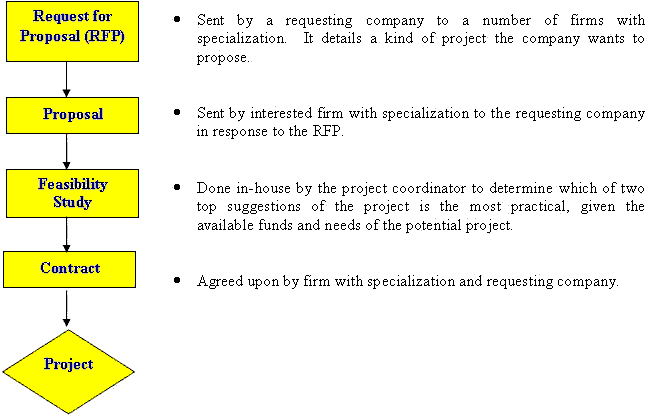 Title : Installation of a Power Generator
Title : Installation of a Power Generator
Abstract
The purpose of this report is to propose a back-up generating plant at the new Lansing facility.
The problems that might result from an electrical power failure at the plant involve both personnel and facilities. Employee injuries could result from moving about with no lighting in the plant, being trapped inside closed tanks, and being struck by items falling from cranes that are operated by vacuum lifts or battery magnets. The plant itself would be in danger of damage from surface-drainage water, fire, and the freezing of pipes and heaters.
A surplus generator is available from our Field Force Division and could be installed for approximately $4060, including labor and material. It can be installed in the powerhouse’s air-compressor room during the month of January, and its operation will require minimum training of personnel.
The generator can meet all the plant’s emergency requirements and do so very economically.
Introduction
Purpose
This report proposes the installation of an on-site electrical generating plant at the new manufacturing facility in Lansing.
Problem
At present, a power failure would result in the following unsafe conditions for the employees: (1) plant lighting would be lost, and employees could not move safely within the plant; (2) employees working inside closed tanks could not get out until the tank could be rotated by an electric motor; (3) employees could be injured by item falling from the three overhead cranes that hold their loads by vacuum lifts or battery magnets and must set them down within 10 minutes after power failure.
A power failure would also cause damage to the plant: (1) the sump pump for surface-drainage water would not operate in the main office building and the basement of the grit-blast area, causing extensive damage to equipment; (2) the fire alarm systems and the main fire pump would not function, and a fire could not be contained; (3) during winter, loss of the main heating boilers would cause water lines and fire loop feedlines to freeze, break, flood areas of the plant, and ruin equipment.
SCOPE
In Section I, this report describes the installation of the generator. This is followed by sections on lighting and equipment changes, the schedule for the project, personnel training, and cost. At the end of the report, conclusions are presented.
SECTION I : INSTALLATION OF THE GENERATOR
A back-up generator is readily available for this project. One was purchased by the Field Force Division in 1970 for use as a standby unit at building sites. Because it was used only while other units were being repaired, the generator has operated for just 565 hours. Similar units have operated in excess of 15,000 hours, so the generator is almost new. It was built by Westinghouse and has a General Motors diesel engine.
The generator can be located in the air-compressor room at the powerhouse. This location will allow easy hookup to the main utility substation. The floor of the powerhouse is sufficient to hold the weight of the generator and to retain bolts needed to anchor the unit. The start-up fuel tank, located near the generator, will be used to operate the diesel engine.
Siding along the powerhouse’s east wall must be removed to allow entrance of the generator; a louvered panel will replace the siding and allow cooling air to circulate around the generator. Installation of the generator will require drilling holes in the floor to mount the anchor bolts. A rack must be built to hold the batteries for starting the diesel engine. An electric load-transfer panel will be assembled and wired into the existing substation, and a fuel line will be connected to the 2000 gallon fuel tank. Hooking the generator to the substation requires installation of three 460 volt cables between the powerhouse and the transformer. This can be accomplished by maintenance personnel.
SECTION II: LIGHTING AND EQUIPMENT CHANGES
In order to stay within the capacity of the generator and still provide the power needed to maintain necessary lighting and motor power, some electrical wiring changes must be made in the plant. Lighting circuits now operated by mechanical switches will have to be changed to electricity. This change means that if the electric power fails, the lighting will not turn on after auxiliary power is established, thus removing electrical loads during power failure. However, the night lights, which will turn on automatically with the start of auxiliary power; will allow employees to leave the plant safely.
The rotoblast power supply will have to be changed to a manual-start mode. This conversion requires the addition of one relay to the panel board and allows personnel operating the cranes to lower suspended loads safely to the floor.
Sump pumps used for the removal of drainage water from the office building and basement of the gritblast will automatically return to operation when auxiliary power is supplied. No changes will be required in the existing circuits to these pumps.
The fire alarm will function as soon as power is transferred to the generator. If a fire should start, the alarm would be sounded immediately. At that time, all electrical power would be turned off, including the night-light circuitry. This is necessary because the fire pump’s motor taxes the generator so much that very little electricity is available.
SECTION III: SCHEDULE FOR THE PROJECT
Phase One
Phase one will be completed during the normal work week, using plant personnel. This phase will include wiring the rotoblast, changing the lighting, installing anchor bolts, installing the fuel line, building and installing battery racks, and wiring the generator to the substation.
Phase Two
Phase two will involve Saturday work because two shifts of four workers each will be required, and these workers cannot be spared from duty during weekdays. Work will consist of removing the siding on the powerhouse wall, moving the generator into the powerhouse, installing it on its anchor bolts, and replacing the siding with a louvered panel.
Phase Three
Phase three will be accomplished on a Sunday when power can be turned off in the plant. Work will consist of hooking cables into the outside substation, hooking the fuel line to the engine, and connecting the power and battery cables to the generator. The power will be off for only half an hour, and no special precautions should be necessary because no operating personnel will be in the plant.
This project can begin 4 weeks before the start of plant shutdown, which is scheduled to begin July 7. Phase one can start June 21. Phase two can be done Saturday, June 22, and phase three can be completed Sunday, June 30.
SECTION IV: PERSONNEL TRAINING
No personnel training will be needed for starting the diesel generator. The control panel installed in the powerhouse will automatically start the engine in the event of a power failure and transfer the plant’s reduced electrical load to the generator.
Operation of the fire pump from auxiliary power requires the manual operation of a start switch. All members of the plant fire team are familiar with this operation.
SUPERVISION
All shop supervisors will be instructed about the limitations of the auxiliary power. These supervisors will tell their personnel which equipment should be operated to assure the safe shutdown. The supervisors have enough experience in their areas to know what needs to be done. All instructions to supervisors will be covered by an interoffice memorandum when the auxiliary generator is operational.
MAINTENANCE
Routine maintenance on the engine and generator, using plant maintenance personnel who are familiar with this type of equipment, will be scheduled. The generator will be tested once per month to insure its availability for an emergency.
SECTION V: COST
The generator, which cost $14,657 in 1963, is now worth approximately $4330 and is available at no cost.
Following are estimated costs for installing the generator, which include labor to build and install the necessary equipment, and costs for material.
Labor rates for plant personnel are based on the latest figures for this plant. Straight-time labor is $7.00 per hour, time and a half is $9.25 per hour, and double time is $11.50 per hour:
Material —————– $2,450.00
Labor ——————– 1,240.00
—————————– $3,690.00
Contingency (10%)——— 370.00
TOTAL COST FOR PROJECT — $3,690.00
CONCLUSION
- Our new manufacturing facility in Lansing represents an investment of $7 million and employs 300 people. Any interruption of electric power would create a total blackout and completely halt the equipment. This would result in very unsafe conditions for employees trying to move within the plant. Damage to equipment and spoilage of materials would also result if the power failure were prolonged.
- Considering the safety of the employees, $4060 for back-up generator is an extremely reasonable investment. In addition, the facilities and equipment that might be damaged during a power failure would cost more than installation of the generator.
Source: Technical Report Writing Today second edition by Steven E. Pauley
